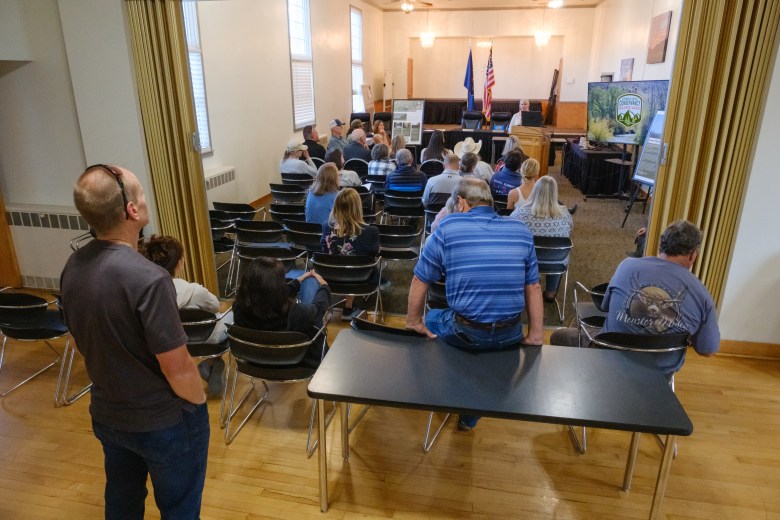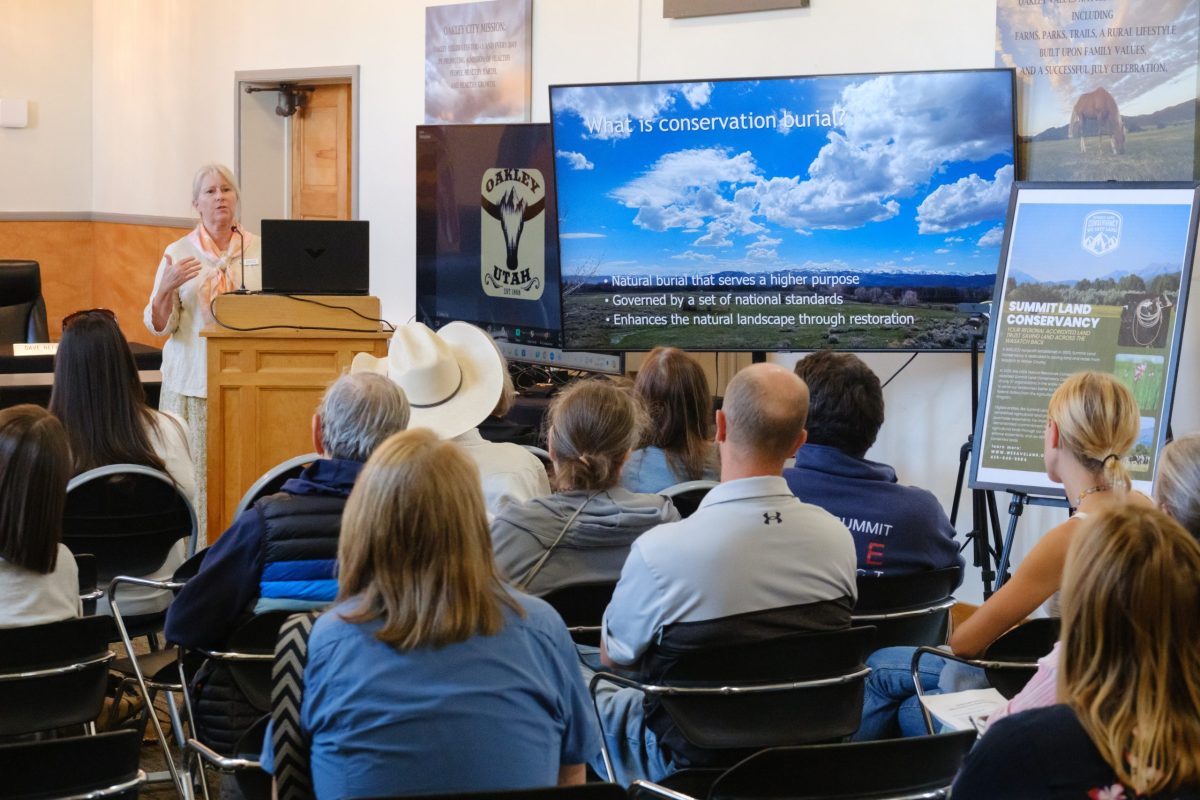Summit County has been grappling with the challenge of preserving its beloved open spaces, but a proposal for a sustainable alternative to traditional burial practices has left some East Side community members flooded with a mix of curiosity and apprehension.
The Summit Land Conservancy on Wednesday presented Oakley residents with a concept for a conservation cemetery on 20 acres of city-owned land. While the approach aims to guarantee environmental protections and provide a revenue source, there were some concerns about the potential impact on neighboring properties, water quality and management resources.
Conservation efforts are focused on protecting around 140 acres near Pinion Lane and Weber Canyon Road. This area already features trails and additional recreational opportunities, with more being planned.
However, the nonprofit’s CEO, Cheryl Fox, envisions a quieter use in another spot that sits in the upper western portion of the property. A place that could serve as a living memorial that honors the lives of all those buried there.
“A conservation cemetery is a place where people can be buried in an all-natural setting. There are no concrete vaults. There is no embalming. There are no hardwood lacquered boxes. It’s what we call pioneer burial. It’s the way humans have laid their loved ones to rest forever,” she said.
The proposed site would be open to the public but would not resemble a typical graveyard. It would have no formal lawns, sprinklers, fertilizers or headstones. A conservation cemetery, which would be the first one in Utah, allows Oakley to preserve the rural character residents cherish by protecting the land in perpetuity without the risk of major development.
Other benefits of a conservation cemetery include reducing carbon emissions, creating a cash flow for the city, providing affordable end-of-life options for residents and building community connection to the outdoors. A portion of the green burial costs would also be remitted back to the Summit Land Conservancy, going back into the nonprofit’s conservation efforts.
Open house attendees seemed supportive of the overall idea, though they were hesitant about the potential pitfalls of the project.
The most common concern was whether green burials would poison the water supply.
One woman questioned how dogs and horses could be prohibited in the watershed if the deceased were to be allowed. Fox affirmed a site analysis study would be conducted to determine if the property is suitable for green burials. If it’s not, there will be no burials. Remediation may be necessary in some areas, and others could be too wet or rocky to dig.
Project advocates said home septic tanks are more likely to have a bigger impact on the soil and water health than a conservation cemetery. The Summit Land Conservancy would work with the Summit County Health Department to ensure compliance, too.

A few homeowners were worried burial grounds would bring down their property values.
Studies have determined there’s no real effect on home prices based on proximity to a graveyard. Yet values would almost certainly decrease if a subdivision were built on the land instead, Fox said. A conservation easement would help cushion property values by protecting the viewshed.
They also wondered how many bodies would be entombed in the earth. Fox was unable to give a specific number, but she previously estimated it could be 150 or less. Only one person would be buried in a plot.
The remains would be placed 3 feet underground compared to 6 feet for a traditional burial. Composting occurs naturally at this level, according to Starks Funeral Parlor director Shayneh Starks. She is certified in green burials and would help facilitate the end-of-life arrangements.
Some residents said Oakley should keep what it has to address what is coming. The city has owned the pristine land for almost 100 years, and there were questions about why officials should give it up now.
Oakley wouldn’t be responsible for managing the property, and city residents could have exclusive benefits if they chose to be buried in the sanctuary.
No formal action was taken this week.
The Oakley City Council must hold a public hearing first. That’s tentatively planned for the end of August or early September. Officials would then vote on whether to approve or deny the conservation easement after hearing community members’ opinions.

